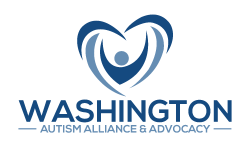Facebook-f
Twitter
Envelope
Back to Library
-
OSPI web page on Transition Services (Ages 16–21)This page contains information about transition services, and also includes links to many state resources such as DVR, DDA, CCTS, Arc, W.I.S.E, etc.
-
Student and Youth Transition HandbookPublished by the Washington State Department of Social and Health Services
Division of Vocational Rehabilitation (DVR). Contains comprehensive information about transition services for students on IEPs and 504 Plans, and the importance of applying for adult SSI and SSDI benefits before the student turns 18. This document also explains DVR’s role and responsibility in providing transition services.
Contains comprehensive information about transition services for students on IEPs and 504 Plans, and the importance of applying for adult SSI and SSDI benefits before the student turns 18. This document also explains DVR’s role and responsibility in providing transition services. -
Center for Change in Transition Services (CCTS)This organization is dedicated to improving post-school outcomes for students with disabilities in Washington State, and contains lots of information and resources about transition services.
-
Transition of Students with Disabilities to Postsecondary Education: A Guide for High School EducatorsPublished by the U.S. Dept. of Education’s Office for Civil Rights in 2007, and reprinted in March 2011. This guide focuses on the transition of students with disabilities from high school to post-secondary institutions. It covers entrance exams; reasonable accommodations and modifications; academic adjustments and auxiliary aids and services; and “keys to success” such as attitude, self-advocacy, and preparation.
-
A Transition Guide to Postsecondary Education and Employment for Students and Youth with Disabilities (May 2017)IDEA policy guidance on transition services published by the U.S. Department of Education and the Office of Special Education and Rehabilitative Services in January 2017. This transition guide addresses the following topics to facilitate a seamless transition from school to post- school activities:
- Transition planning: opportunities and programs;
- Transition services and requirements, as authorized by IDEA and the Rehabilitation Act;
- Education and employment options for students and youth with disabilities after leaving secondary school; and
- Supporting decisions made by students and youth with disabilities.
This guide also includes real life examples, a sample flow chart of the transition process, and a glossary of key terms used in the transition process.
-
February 27, 2017 OSEP Letter to AnonymousInformal guidance from the U.S. Department of Education’s Office of Special Education Programs (OSEP) addressing what actions are needed to meet the requirement to annually update a student’s postsecondary goals and transition services, and whether the IEP Team must always revise those goals to meet the requirement.
-
WIOA: What is means for people with intellectual and/or developmental disabilities (I/DD)A document produced by the Arc explaining the most recent authorization of the Workforce Innovation and Opportunity Act (WIOA), and how it is intended to improve access to transition services for students by adding pre-employment services and better coordination among agencies.
-
Dear Parent letter, March 16, 2007Letter from the U.S. Dept. of Education’s Office for Civil Rights Assistant Secretary Stephanie Monroe, regarding the legal rights and responsibilities of students with disabilities as they transition from secondary to postsecondary education settings.
-
Rehabilitation Services Administration Information Memorandum RSA-IM-07-08Produced on July 23, 2007 by the U.S. Department of Education’s Office of Special Education and Rehabilitative Services to address the topic of transition. The purpose of this information memorandum is to provide State Vocational Rehabilitation (VR) agencies information about a comprehensive transition program that uses a variety of activities and innovative approaches to expose transition-age youth with disabilities (ages 14 to 24) to careers in science, technology, engineering, and math and other technology-based professions.
-
Autism Guidebook for Washington State: A Resource for Individuals, Families, and Professionals (WA DOH 2010)Comprehensive resource with information and recommended strategies for caring for children with autism in Washington State. Includes references to various federal laws and state agencies. The guidelines are intended to serve as an informational tool to assist in the navigation of available treatments and services, including education.
- Chapter 5 Essential Components of Instruction starts on page 33
(Applied Behavior Analysis is on page 41) - Chapter 6 Essential Components of an Instructional Program starts on page 47
- Chapter 7 Community Transition starts on page 75
- Chapter 5 Essential Components of Instruction starts on page 33
-
Washington Administrative Codes that apply to transition services:
- WAC 392-172A-01190; Transition services.
- WAC 392-172A-03090; Definition of individualized education program.
- WAC 392-172A-05135; Transfer of parental rights to the student at age of majority.
